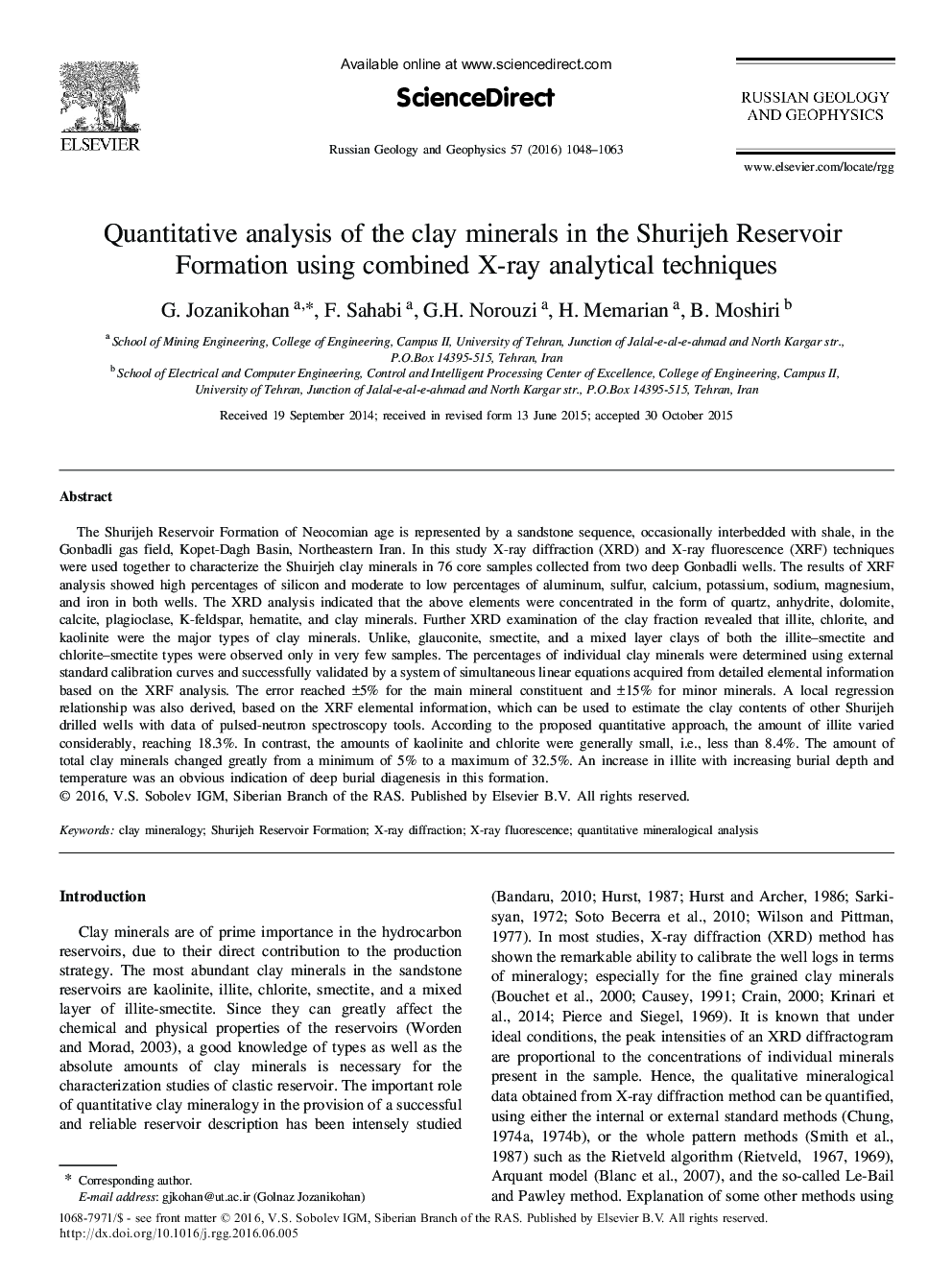| کد مقاله | کد نشریه | سال انتشار | مقاله انگلیسی | نسخه تمام متن |
|---|---|---|---|---|
| 4738401 | 1358280 | 2016 | 16 صفحه PDF | دانلود رایگان |

The Shurijeh Reservoir Formation of Neocomian age is represented by a sandstone sequence, occasionally interbedded with shale, in the Gonbadli gas field, Kopet-Dagh Basin, Northeastern Iran. In this study X-ray diffraction (XRD) and X-ray fluorescence (XRF) techniques were used together to characterize the Shuirjeh clay minerals in 76 core samples collected from two deep Gonbadli wells. The results of XRF analysis showed high percentages of silicon and moderate to low percentages of aluminum, sulfur, calcium, potassium, sodium, magnesium, and iron in both wells. The XRD analysis indicated that the above elements were concentrated in the form of quartz, anhydrite, dolomite, calcite, plagioclase, K-feldspar, hematite, and clay minerals. Further XRD examination of the clay fraction revealed that illite, chlorite, and kaolinite were the major types of clay minerals. Unlike, glauconite, smectite, and a mixed layer clays of both the illite–smectite and chlorite–smectite types were observed only in very few samples. The percentages of individual clay minerals were determined using external standard calibration curves and successfully validated by a system of simultaneous linear equations acquired from detailed elemental information based on the XRF analysis. The error reached ± 5% for the main mineral constituent and ± 15% for minor minerals. A local regression relationship was also derived, based on the XRF elemental information, which can be used to estimate the clay contents of other Shurijeh drilled wells with data of pulsed-neutron spectroscopy tools. According to the proposed quantitative approach, the amount of illite varied considerably, reaching 18.3%. In contrast, the amounts of kaolinite and chlorite were generally small, i.e., less than 8.4%. The amount of total clay minerals changed greatly from a minimum of 5% to a maximum of 32.5%. An increase in illite with increasing burial depth and temperature was an obvious indication of deep burial diagenesis in this formation.
Journal: Russian Geology and Geophysics - Volume 57, Issue 7, July 2016, Pages 1048–1063